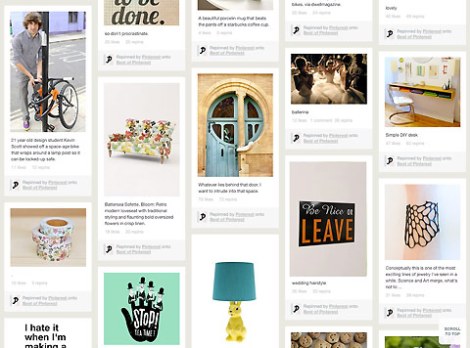I want to write a little entry about the similarities and differences of Youtube and Pinterest. Pinterest, at least compared to Youtube, is the new kid on the social media block. Although they both allow a user to create an account, consume a vast amount of content, personalize their intake, and save content for later, they are ultimately quite different. Beyond the basic observation that Pinterest deals with images while Youtube deals with video, they serve completely different functions.
Youtube contains a massive blob of content. Not only is it massive, but the amount of variety is astonishing. If a user is looking for banal entertainment, they will grow gray and die years before they work their way through 1/10th of what Youtube has to offer. If a person is looking for an instructional video about how to do X, Y or Z, they have only to search. Practically any topic about anything is available in video format on Youtube. However, with that being said, the social aspect of Youtube is rather neutered compared to its neighboring services. Youtube’s comments are notorious for being some of the worst commentary that the internet has to offer, and the relationship between users and more prominent posters is not one of a functioning community. It is difficult to develop a niche or personal space for oneself on Youtube. That, however, is where Pinterest comes in.
Pinterest, on the other hand, is highly personalized. It is light on meaty content, but heavy on whimsy and character. A person’s boards reflect who they are, what they hope to achieve, and their particular interests. While “favoriting” a funny video on Youtube may make a statement about your taste, it offers very little insight into who you are. When somebody pins ten pictures of cats, three pictures of crocheting needles, and a picture of Venice, viewers are given a bit more of a look into the person’s personality.
Ultimately, the two services accomplish completely different things. While Pinterest is about developing an identity and wish-fulfillment, Youtube is more pragmatic, although I say that reluctantly, as the bulk usage of Youtube is for frivolous entertainment ala Reddit. Use them both!











